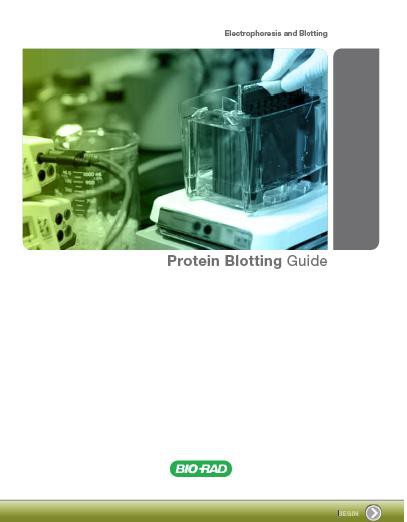 The following are the top 8 causes for overall high background on your western blot and potential solutions:
The following are the top 8 causes for overall high background on your western blot and potential solutions:
- Blocking was incomplete
- Increase the concentration of blocker
- Increase the duration of the blocking step
- Use a different blocking agent
- Blocker was impure
- Use a pure protein such as BSA or casein as a blocker
- Wash protocols were insufficient
- Increase the number, duration, or stringency of the washes
- Include progressively stronger detergents in the washes; for example, SDS is stronger than Nonidet P-40 (NP-40), which is stronger than Tween 20
- Include Tween 20 in the antibody dilution buffers to reduce nonspecific binding
- The blot was left in the enzyme substrate too long (colorimetric detection)
- Remove the blot from the substrate solution when the signal-to-noise level is acceptable, and immerse in diH2O
- Contamination occurred during electrophoresis or transfer
- Discard and prepare fresh gels and transfer solutions
- Replace or thoroughly clean contaminated foam pads if a tank blotter was used
- Excessive amounts of protein were loadedon the gel or too much SDS was used inthe transfer buffer. Proteins can pass through the membrane without binding and recirculate through a tank blotting system.
- Reduce the amount of protein on the gel or SDS in the transfer buffer
- Add a second sheet of membrane to bind excess protein
- The primary or secondary antibody was too concentrated
- Increase antibody dilutions
- Perform a dot-blot experiment to optimize working antibody concentration
- Incubation trays were contaminated
- Clean the trays or use disposable trays
For more great information, download the protein blotting guide from Bio-Rad Laboratories.
Tags: Bio-Rad Laboratories, electrophoresis, Proteomics, research methodology, western blotting















